Often Italian villages are real treasure chests that preserve the history, art and culture of the territory, exceptional places to visit for discovering the extraordinary beauty heritage of this country. And today, in fact, we will find out one of them: set off with us towards Sabbioneta, a jewel of Renaissance in the province of Mantua founded by duke Vespasiano Gonzaga.
This charming village, located in the heart of the Po Valley, stands out for its majestic artistic and architectural refinement and for its flawless conservation over centuries, a true icon of the Italian Renaissance. Buckle up and get ready to discover Sabbioneta and its surroundings, your journey to this gem is about to begin!

Where is Sabbioneta and how to get there from Mantua
The village of Sabbioneta is immersed in the landscape of the Po Valley, between the rivers Po to the south and Oglio to the north, next to the border between Lombardy and Emilia-Romagna. The municipality is part of the province of Mantua and is located near the provinces of Cremona and Parma.
To discover Sabbioneta, Mantua and all the other wonders of Lombardy, please check out the fantastic experiences to enjoy in this region in a seven-days itinerary.
How to get to Sabbioneta starting from Mantua? The most convenient means of transport is the car, with which you can easily get to the destination by driving on the SP420 (about 40 minutes). Alternatively, it is also possible to travel by using public transport, in particular with the bus line 17 (around 1 hour); for further information, check out the complete timetables of bus lines in Mantua.
Visit the Ducal Palace of MantuaSabbioneta: discover this world heritage site
Finally, here we are in Sabbioneta! What to discover in this jewel of Renaissance? The village, together with the provincial capital Mantua, boasts an exceptional cultural and architectural heritage capable of enchanting visitors with its timeless charm.
Acknowledged as UNESCO World Heritage Site in 2008, Sabbioneta has an extraordinary urban cohesion, with majestic squares, palaces, porticoes and a perfectly preserved classical-style theatre, the result of the Gonzaga hegemony.
Every corner, every alley, every brick here in Sabbioneta tells stories of beauty and artistic and cultural refinement, inviting tourists to immerse themselves with amazement in its unique and magical atmosphere. In short, an absolutely unmissable destination!
The Ducal Palace of Sabbioneta
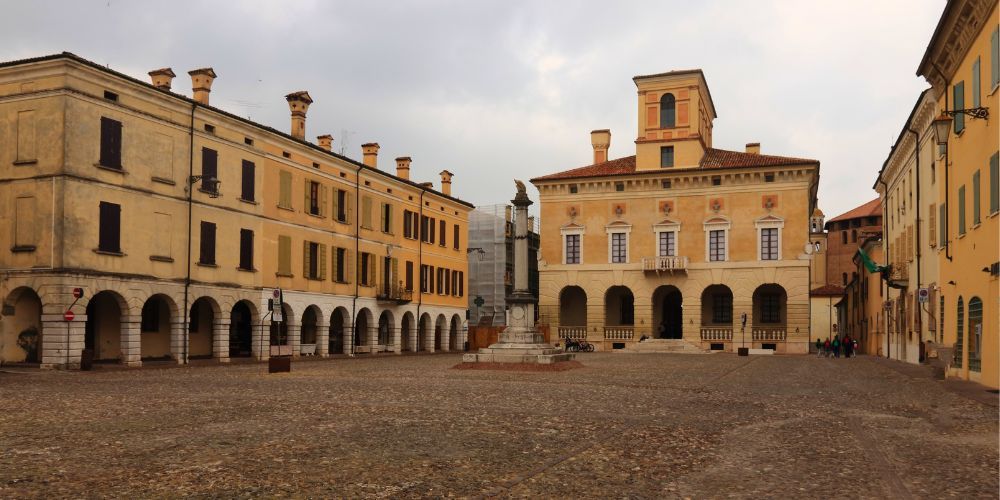
The first thing to visit in Sabbioneta is certainly the Ducal Palace of Vespasiano Gonzaga, a Renaissance building (1578) which stands majestically in the center of the village on Piazza Ducale. The construction of this palace, as noble residence and core of the political administration of Sabbioneta, was the first step towards the creation of the ideal city desired by the duke.
Today the Ducal Palace is owned by the municipality and houses the civic museum of Sabbioneta, whose rooms are distributed over the two floors of the building. In particular, among the evocative walls frescoed by the best artists of the time active in Lombardy, such as Mantovano, Campi, Rubone and Cavalli, and the many relics of the Gonzaga family that populate the museum, the wooden equestrian statues of the duke kept in the so-called ‘sala delle aquile’ (‘hall of eagles’) stand out.
The Gallery of the Ancients (Galleria degli Antichi)
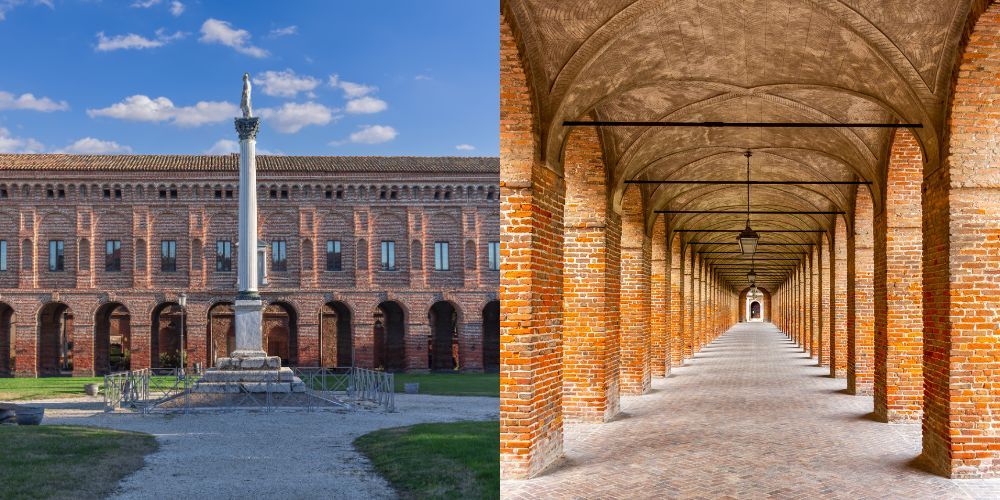
Another iconic place that characterizes Sabbioneta is the Gallery of the Ancients (Galleria degli Antichi), also called Corridor Grande, a fascinating historic building that overlooks Piazza d'Armi in the southernmost area of the village.
The peculiarity of this building, built in the 1580s as a place to store and display a large collection of ancient marbles and other relics, lies in its vast and evocative portico which extends for almost 100 metres: a location that amazes for its atmosphere, so much so that it was chosen as a set for some successful film productions including the series Medici.
The Gallery of the Ancients is adjacent to the Garden Palace (Palazzo del Giardino), another ducal residence with a large Italian garden with avenues and a fountain; the palace houses the Camerino di Enea, the private study-room of Duke Vespasiano Gonzaga finely frescoed by the masters Campi and Mantovano.
The Theater of the Ancients (Teatro all’Antica)
One of the gems to visit in Sabbioneta is undoubtedly the Theater of the Ancients (Teatro all'Antica), also known as Teatro Olimpico, the main artistic and cultural center of the village commissioned by Duke Gonzaga to Vincenzo Scamozzi, one of the most illustrious architects of the Republic of Venice.
The peculiarity of this place, inaugurated in 1590, lies in the fact that its construction was specifically arranged for the foundation of a modern permanent theater and the building that houses it, in fact, is considered the first absolute example in Europe of real estate built on purpose for the creation of the theater space.
Inside, the theater is characterized by its unique atmosphere given the exceptional scenography that recalls ancient Rome with precious decorations and great attention to detail, perfectly mixing renaissance refinement with the class of antiquity. It is a place of great beauty, capable of transporting visitors into the magic of the theater in an unforgettable experience of pure amazement.
The churches of Sabbioneta
To conclude the tour in this world heritage site village and jewel of the Renaissance, we can only end with a bang by visiting the churches of Sabbioneta, buildings of worship with a particular artistic taste that are worth discovering.
In Piazza Ducale there is the Church of Santa Maria Assunta, the parish church of Sabbioneta which was renovated according to Renaissance aesthetic canons commissioned by Vespasiano Gonzaga, completed in 1592 with the completion of the new bell tower. Inside there are a copy of the Madonna del Divino Amore by Raffaello Sanzio, the Miraculous Crucifix of San Carlo Borromeo and a presumed thorn from the crown of Jesus.
In Piazza Libreria Grande, behind the Ducal Palace, we find the Church of the Beata Vergine Incoronata. Built between 1586-88, this building is particularly important for Sabbioneta as it is the mausoleum of Vespasiano Gonzaga, to whom a bronze funerary monument is dedicated which portrays the duke sitting between two other statues depicting strength and justice.
Moving outside the urban center of Sabbioneta, precisely in the hamlet of Villa Pasquali, here is finally the suggestive Church of Sant'Antonio Abate. It is a building built in the second half of the 1700s in Rococo style, particularly evocative for its grandeur (the dome is 33 meter high) and its visibly divergent aesthetics compared to the artistic style that distinguishes the other main buildings of Sabbioneta.
Whta to do after Sabbioneta? Find out what to see in the surroundings (Parma)
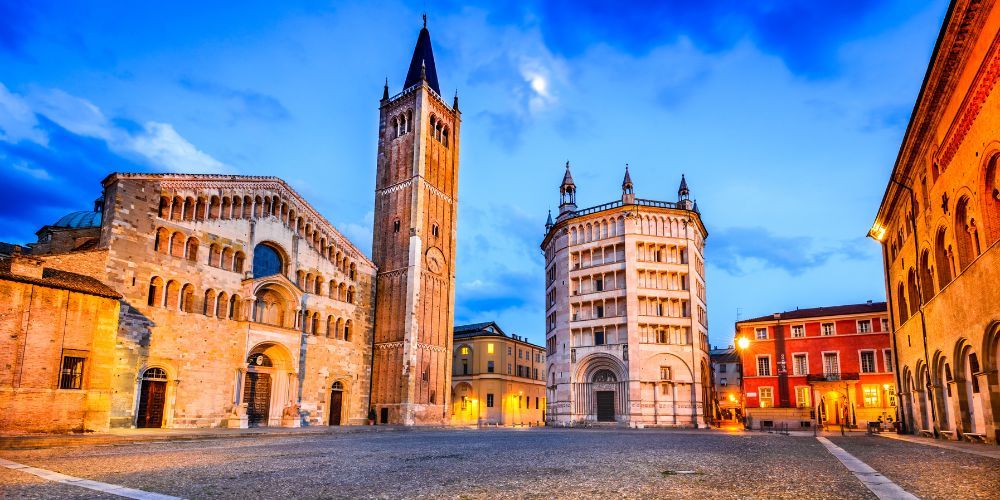
What to do after visiting Sabbioneta? If you are in the surrounding area and still looking for fantastic experiences to enjoy around here, moving comfortably by car or even by bicycle, we suggest a very interesting destination not far from the ideal city of Vespasiano Gonzaga: we are talking about Parma, a beautiful Emilian city just a bit south of Sabbioneta, beyond the Po.
To reach Parma from Sabbioneta by car, just take the SP343R near Casalmaggiore and continue to your destination (about 30 minutes); you can also move by using public transport, first reaching Casalmaggiore by bus and from here taking another bus or train to Parma (about 1 hour and a half).
On the other hand, if you like sport and want to be green even while enjoying your holiday, with a bicycle ride of less than 2 hours you can reach this fantastic Emilian city, also known as little Paris, among the unmissable cities for bike lovers!
Discover the historic center of Parma on a guided tourAbout the author
Written on 23/02/2024


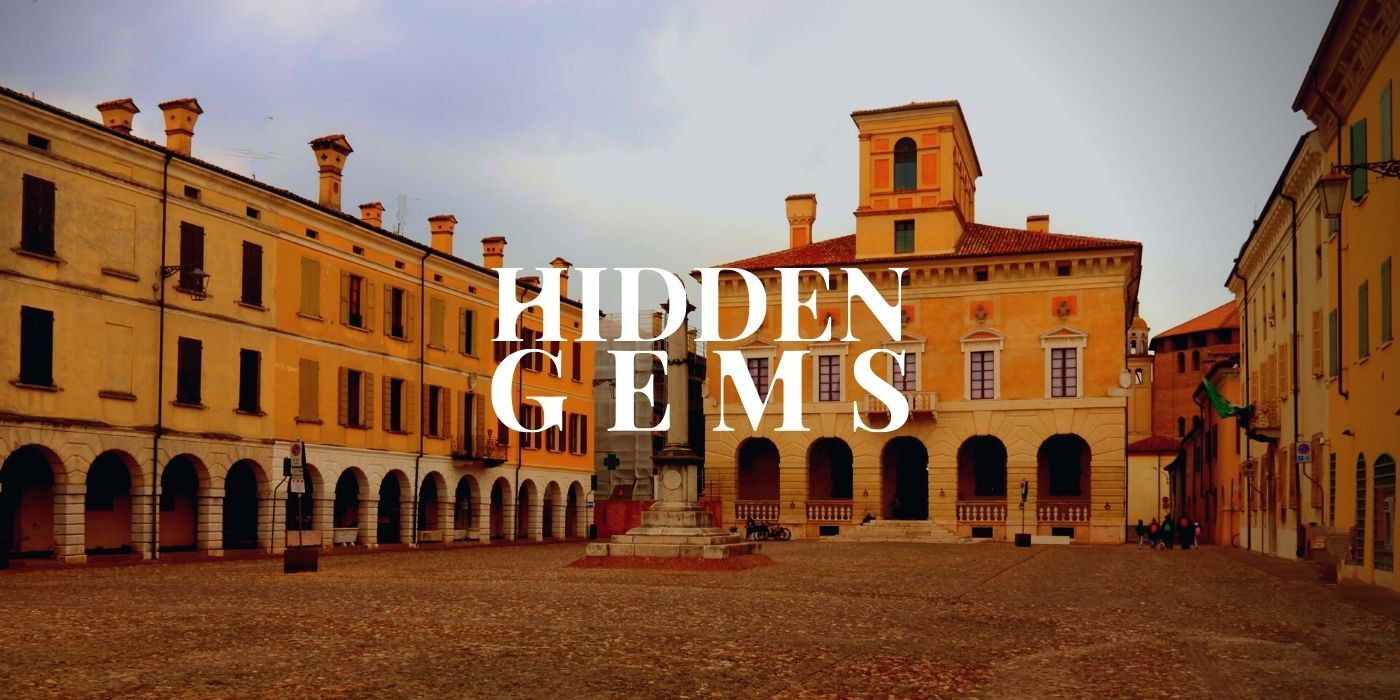

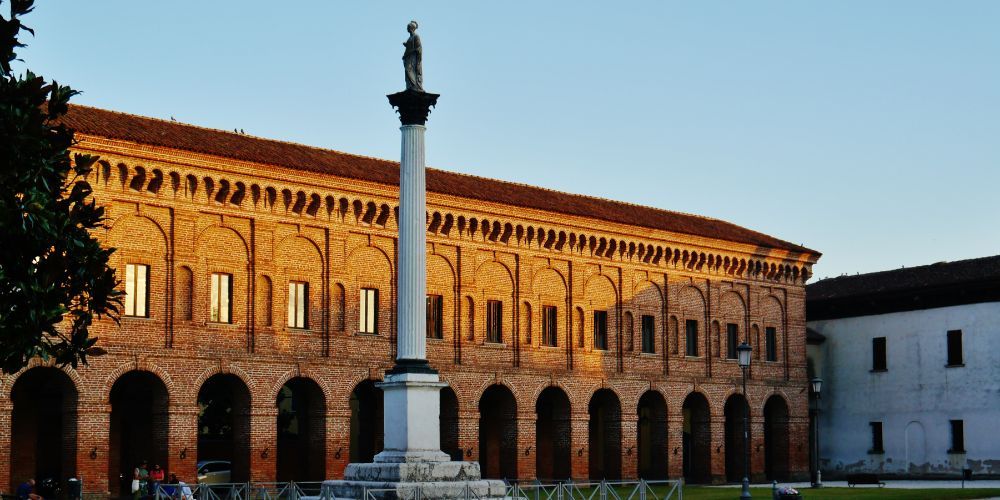



Massimiliano Antonio Primi
Discover with us Sabbioneta, a world heritage village next to Mantua and a jewel of the Renaissance founded on behalf of duke Vespasiano Gonzaga.